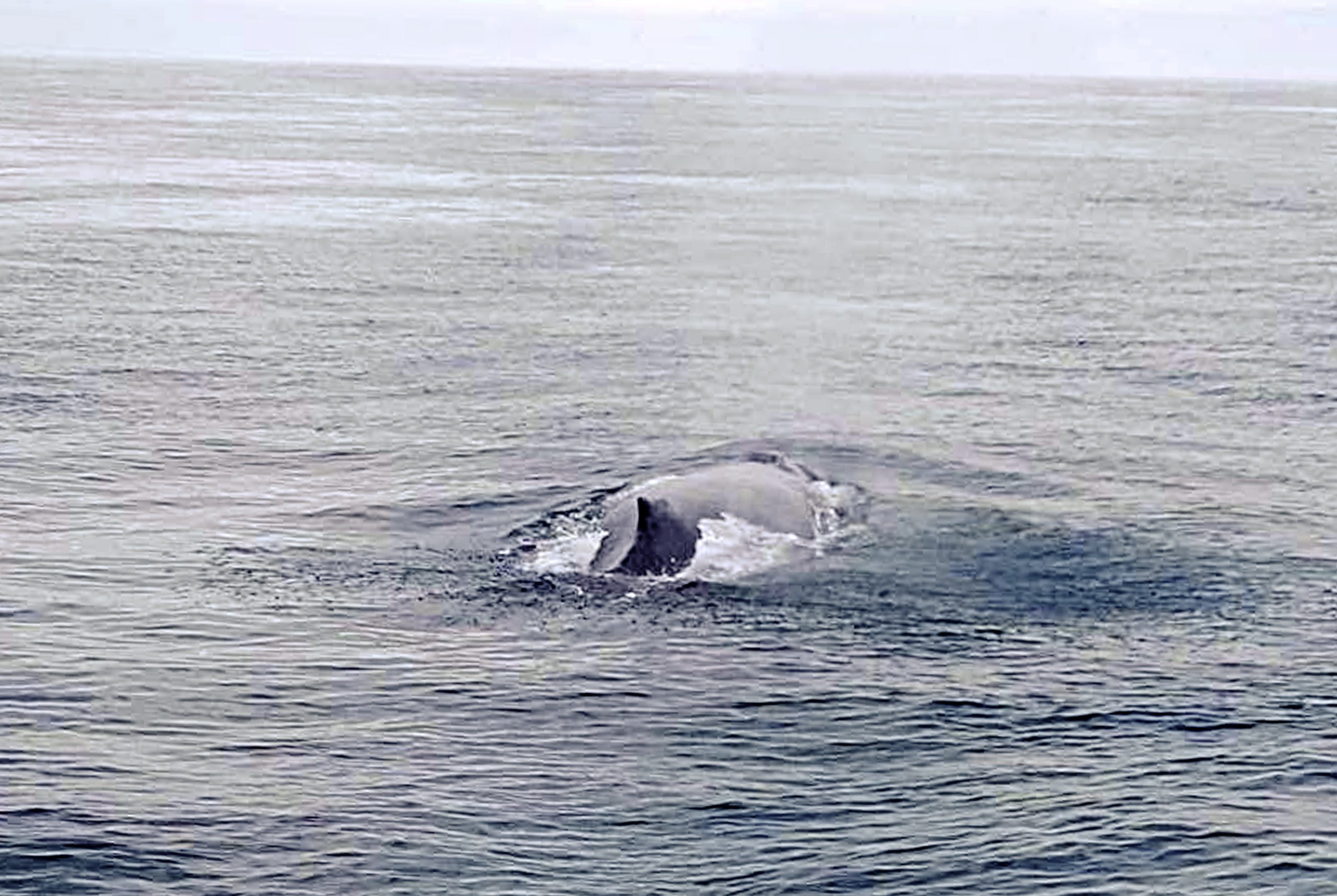Gareth Jeffreys, the chairman of the marine biology section of the Société Jersiaise, said that after extensive analysis of pictures and video taken by two fishermen on 2 November, the sighting had formally gone down in Jersey’s history as a first.
The sighting of the whale 15 miles west of St Ouen has now been recorded in the Jersey Biology Centre database, which dates back to the 19th century.
Mr Jeffreys said that there were two possible explanations for the sighting, but he was keeping his fingers crossed that it would mean more similar encounters in the future.
‘It does raise a number of questions, was this just a lone individual going on its way or exploring, maybe lost, or are we seeing a movement of the animals? It could be just an animal gone out of its way and that has now gone back, or it might be that the animals are moving to a new area,’ he said.
‘I think on the same trip a school of bluefin tuna were recorded feeding, they seem to be getting closer to Jersey and Guernsey with more sightings. Essentially they feed on similar bait fish [to humpback whales], so are the sightings connected? At the moment we just don’t know.’
Little is known about the whale sighted earlier this month, but experts say it was not yet fully grown. Humpback whales live in oceans across the world and are capable of travelling up to 25 km an hour.
Ed Egré had been fishing with skipper Peter Gay when he saw the whale, which he first described as a ‘dark shape in the distance’. He said: ‘At first I thought I had seen a dolphin but when it resurfaced I saw the puff of misty air as it exhaled and I realised this wasn’t a dolphin. We headed towards where we had last seen it, turned off the engine and waited. Eventually we saw it resurface and followed it at a distance. That was when we saw the scale of it and realised we were seeing something very special.’
He added: ‘I felt surprised as I had never expected to see a whale in Jersey waters and I was very keen to photograph the whale so that the species could be identified.’
Mr Jeffreys said that such pictures were invaluable to the team at the Société Jersiaise and had enabled an official recording to be made. And he added that while the sighting was technically just outside of the boundary of Jersey’s waters, it was ‘very, very close so we will take it’.






